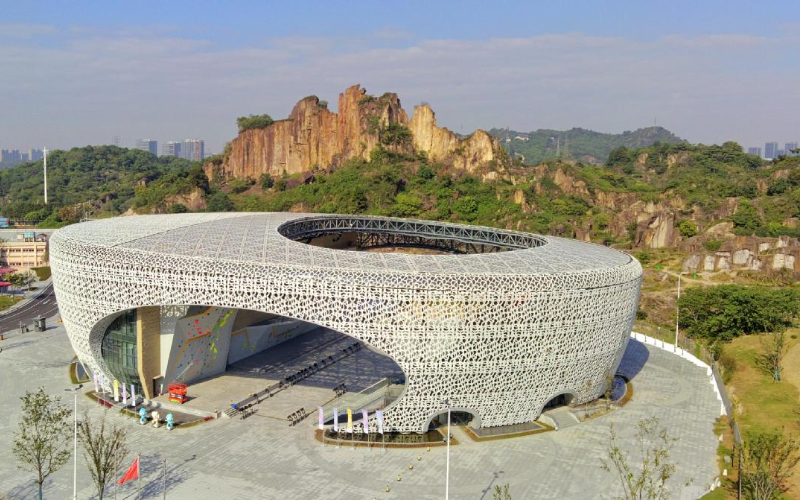Beautiful climbing center takes it to the next level

Shaoxing Keqiao Yangshan Sport Climbing Center. [Photo by Lin Shujuan/China Daily]
As one of the most visually stunning venues of the 19th Asian Games, the Shaoxing Keqiao Yangshan Sport Climbing Center is a marvel of design and construction and boasts a unique blend of semi-open architecture and stunning views.
As the world's first fully functional permanent climbing competition venue, the center is designed around the shape of a silkworm cocoon and stands on the site of an abandoned quarry in Shaoxing, Zhejiang province.
During the Asian Games, 110 athletes from 16 countries and regions will compete at the venue for six gold medals, from Oct 3 to 7.
According to Huang Huiming, the project's lead architect, the venue was designed to honor two local legacies: quarrying and the silk industry.
The old quarry at the site, which dates back more than 1,500 years, is believed to be the location where Goujian, a king from the Spring and Autumn Period (770-476 BC), obtained the giant stones needed to build the ancient city of Shaoxing, which also endowed the quarry site with its unique and spectacular landscape.
In the 1960s, the area was filled with soil and planted with mulberry trees and served as a silkworm farming base for local villagers. However, in the 1990s, the silkworm industry gradually faded away and the site was left in disrepair and overgrown with weeds.
As Hangzhou is known as the "Silk Capital" and Shaoxing is globally renowned for its textile industry, the design team of the climbing center came up with a vision to create a monument that would honor both legacies.
"The cocoon has been crafted and serves as a bridge between the past and present, and is also a symbol of transformation and rebirth," the team said.
In addition, the venue's design adopts the gardening techniques of borrowing and dividing. Through the hollowed-out curtain wall, spectators are able to enjoy not only the action but the natural landscapes.
"Sport climbing is often described as 'ballet on rocks', and was originally exclusively an outdoor activity. So, the ancient giant rocks that remained here are a perfect fit for the sport," said Huang.

